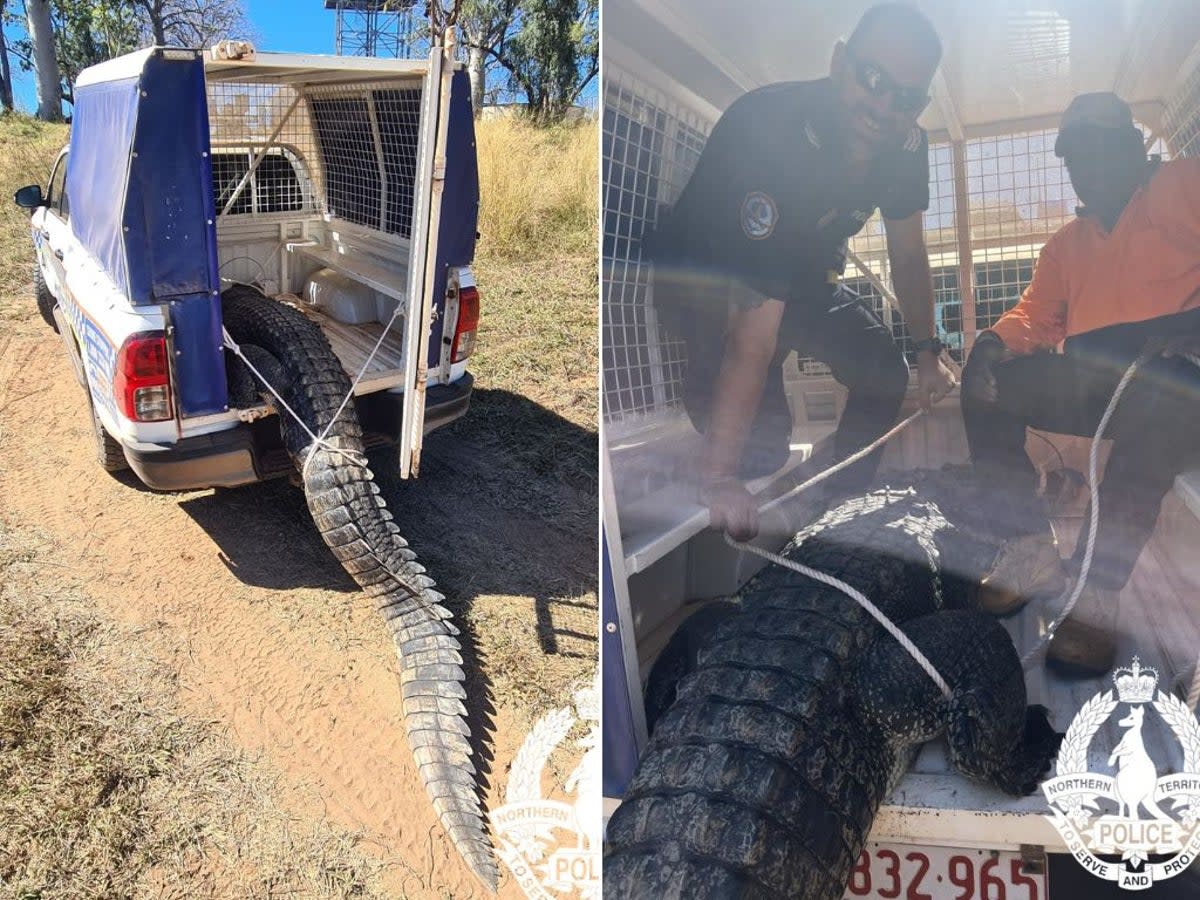Australian villagers kill and eat giant crocodile which hunted their pets

A saltwater crocodile which was targeting villagers and eating their pet dogs was killed and eaten by villagers in Australia’s Northern Territory, police said.
The 3.63m “problem” reptile had been seen in the remote Baines river after severe flooding in the area, which lies around 700km southwest of Darwin, the NT police said.
Police said they shot the crocodile “to ensure that it did not continue to pose a significant risk to the community” after consultation with traditional owners, elders, community members and Parks and Wildlife.
It was then transported to the nearby Aboriginal community of Bulla, a township in Australia, “where the community prepared it for a feast in the traditional manner”, according to remote sergeant Andrew McBride who confirmed that the animal was eaten to ABC News Breakfast.
The official confirmed the increasing presence of crocodiles in the territory’s west after the flooding that drowned the area earlier this year, adding that they are “popping up where they’ve never been seen before”.
"Just the immense amount of water that came into the area, crocodile are popping up in locations you wouldn’t normally see them," he said.
The deceased crocodile, he said, was one of the reptiles that had “gone for a bit of a swim and a walk and popped up very close to residents".
Meanwhile, police officials and park authorities in the Northern Territory have warned locals to be wary of these dangerous reptiles.
“Any body of water in the Top End may contain large and potentially dangerous crocodiles. That’s why we urge everyone to Be Crocwise and only swim where there are designated swimming signs,” said Kristen Hay, director of wildlife operations at Department of Environment, Parks and Water Security. Be Crocwise integrates public education and active crocodile management by the Northern Territory Government to reduce the risk of crocodile attacks.
Park and Wildlife officials also carried out an “opportunistic crocodile safety session” with the children and gave them “an up-close look at the dangers within our waterways”.


